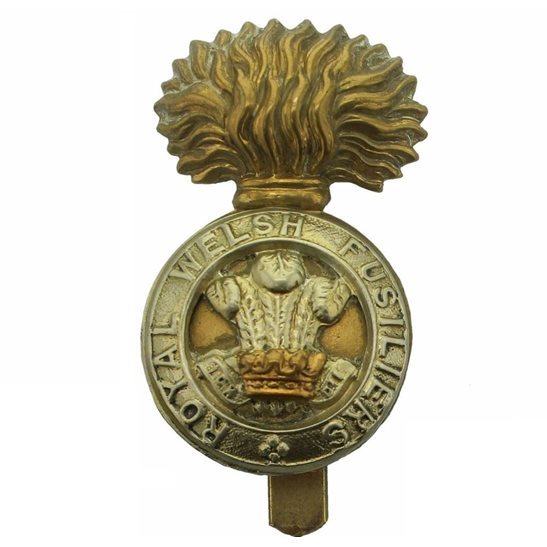Personal Details
Born: 27 December 1892 in Wem, Shropshire.
Family: He was the son of Frances Sarah Wilkinson; his mother married Benjamin Peplow in 1899 and he was brought up in this family, with a step sister Frances Violet Anne. He remained unmarried.
Residence: According to 1899 school records Thomas was living at Ellerdine Heath. According to the 1901 and 1911 Census returns Ellerdine Heath, Wellington, Shropshire remained his address. According to army pension records, his address when discharged was 1 Quarry Place, Shrewsbury. From 1920 until at least 1939 he lived at Moston Lodge, Harcourt Estate, Stanton upon Hine Heath, Shrewsbury, Shropshire.
Employment: In 1911 he was a bricklayer’s labourer, in 1915 an estate labourer and in 1939 he was a gardener.
Died: In 1944 in Shrewsbury, aged 51.
Military Details
Regiment: Royal Welsh Fusiliers (previously King’s Liverpool Regiment)
Rank: Private
Service Number: 43512 (previously 46594)
Date of Enlistment: 11 December 1915
Date of Discharge: 21 January 1920
Reason for Discharge: Demobilisation
Other Information: He served in India and was hospitalised in Mesopotamia during WW1.
Thomas was awarded the Campaign Medals (British War Medal and Victory Medal)

The British War Medal (also known as 'Squeak') was a silver or bronze medal awarded to officers and men of the British and Imperial Forces who either entered a theatre of war or entered service overseas between 5th August 1914 and 11th November 1918 inclusive. This was later extended to services in Russia, Siberia and some other areas in 1919 and 1920. Approximately 6.5 million British War Medals were issued. Approximately 6.4 million of these were the silver versions of this medal. Around 110,000 of a bronze version were issued mainly to Chinese, Maltese and Indian Labour Corps. The front (obv or obverse) of the medal depicts the head of George V. The recipient's service number, rank, name and unit was impressed on the rim.
The Allied Victory Medal (also known as 'Wilfred') was issued by each of the allies. It was decided that each of the allies should each issue their own bronze victory medal with a similar design, similar equivalent wording and identical ribbon. The British medal was designed by W. McMillan. The front depicts a winged classical figure representing victory. Approximately 5.7 million victory medals were issued. Interestingly, eligibility for this medal was more restrictive and not everyone who received the British War Medal ('Squeak') also received the Victory Medal ('Wilfred'). However, in general, all recipients of 'Wilfred' also received 'Squeak' and all recipients of The 1914 Star or The 1914/1915 Star (also known as 'Pip') also received both 'Squeak' and 'Wilfred'. The recipient's service number, rank, name and unit was impressed on the rim.

